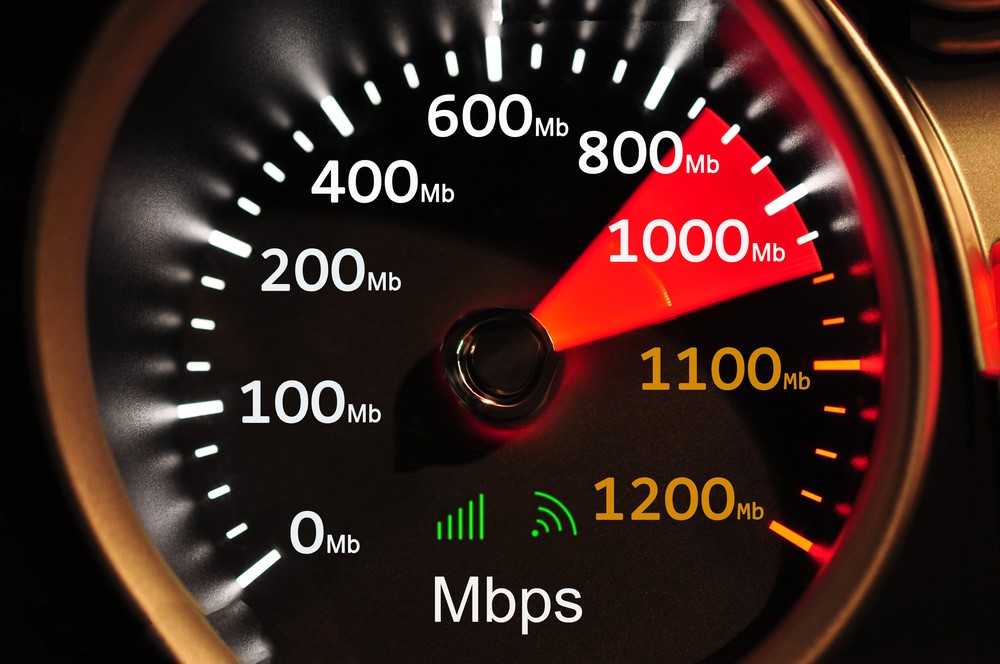- One of the most important factors when choosing a broadband plan is knowing what the average speed on that plan is.
- Internet speed terminology can be a bit baffling to the uninitiated.
- Scroll down if you need a crash course!

When picking a broadband plan, a crucial factor is understanding the average speed. Even if you have the answer, you might still be unsure how it impacts your Internet use.
Your connection type depends on what's available in your area, but we'll focus on NBN speeds. While we've given examples to help you grasp the speed differences, remember, it's just a guide and typical evening speeds can vary.
Mbps defined
Mbps, short for "megabits per second," measures how fast data travels from the main network to you. A higher Mbps means a faster connection. Don't mix it up with MBps (with a capital B), which stands for "megabytes per second."
The Mbps number also tells you how many tasks your Internet can handle at once without slowing down. If the Mbps is low, you can do fewer things online simultaneously.
When picking a plan, consider your online activities and how many people in your home connect to the network. Choose wisely based on your needs.
NBN speeds
NBN speed tiers differ depending on the needs of your household. Understanding each tier and the benefits can help you to decide which NBN plan to choose. The speed tiers and who each one is best for is listed below:
NBN 12
Best for: People living alone or for couples.
The first tier which advertises download speeds of 12Mbps is designed as a match for older ADSL2+ speeds. 12Mbps plans are the cheapest available and is the current bare minimum - certainly not fast enough for streaming high definition videos.
NBN 25
Best for: Watching TV/general Internet browsing
This Tier 2 connection provides 25Mbps, which is a good amount of bandwidth for smaller households who have standard Internet usage.
NBN 50
Best for: Larger families who want to stream from more than one device
This speed connection is one of the most common connections available. 50Mbps speeds are great for families who may want to stream music and movies all at the same time on their own devices at home without a suffering download speed.
NBN 100
Best for: Gamers, busy Internet users, those who work from home.
One of the fastest speeds available today and the best way to future-proof your connection is a plan in this NBN 100 speed tier. This speed option is best for large families or share homes that will be able to make use of the capacity of this connection speed.
It is also a fantastic choice for businesses, as these connections offer between 17-40Mbps upload speeds, fantastic for backing up business systems or sharing large files with colleagues.
NBN 250
Best for: Businesses, heavy gamers, multiple devices
The NBN 250 connection speed is for the home that has multiple devices streaming video and gaming all at once. This plan also provides a good amount of bandwidth for businesses that want to make use of cloud-based storage.
NBN 1000
Best for: Up/downloading large files, running a home office, streaming multiple high-definition videos
Finally, we have the top tier option with 1000Mbps download speeds. If you are looking to future-proof your home or business and have the budget for it, then this is the speed tier you want. This connection can provide up to 100Mbps upload speeds which is great for uploading large files or backing up your system to the cloud.
With this amount of bandwidth, 1000Mbps connections are perfect for running a home office and streaming high-definition video content all at once without any noticeable drop in connection speeds or quality.
Benchmark of NBN speeds
The NBN offers a range of speed tiers tailored to meet the diverse needs and preferences of households.
| Category | Speed |
| Basic I | NBN 12 | Potential 12 Mbps download | 1 Mbps upload |
| Basic II | NBN 25 | Potential 25 Mbps download | 5 Mbps upload |
| Standard | NBN 50 | Potential 50 Mbps download | 20 Mbps upload |
| Fast | NBN 100/20 | Potential 100 Mbps download | 20 Mbps upload |
| Fast | NBN 100/40 | Potential 100 Mbps download | 40 Mbps upload |
| Superfast | NBN 250 | Potential 250 Mbps download | 25 Mbps upload |
| Ultrafast | NBN 1000 | Potential 1000 Mbps download | 50 Mbps upload |
Although the speeds mentioned earlier are the ideal ones, it's essential to consider that some providers publish a typical evening speed (usually from 7 pm to 11 pm), which tends to be slightly lower.
This is because during peak hours, when many people are online simultaneously, your connection speed may decrease. If this happens, make sure you're aware of your provider's published typical evening speed.
Reach out to Compare Broadband and get connected
The Internet speed you choose will vary in price and the benefits you get with each plan will also differ. Give our team a call today and we’ll help you to decide which plan works best for you.


